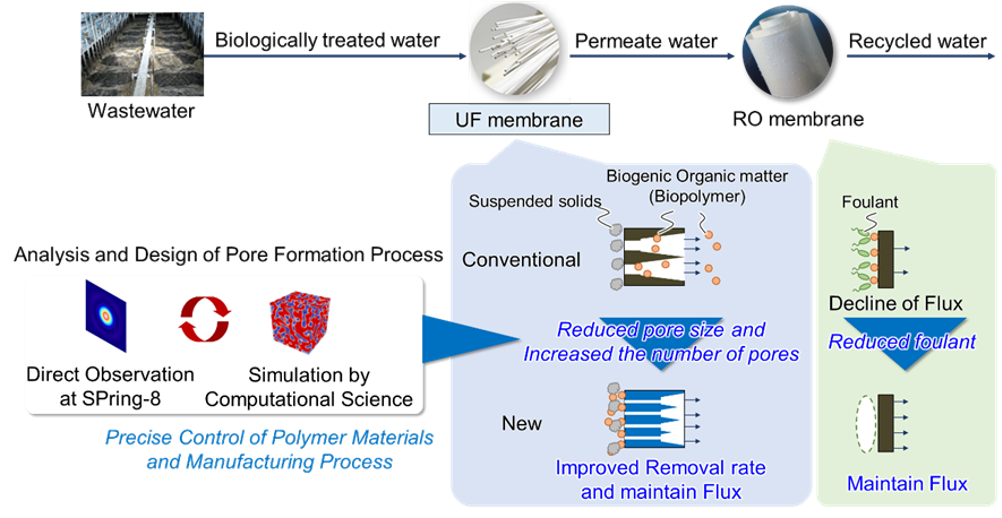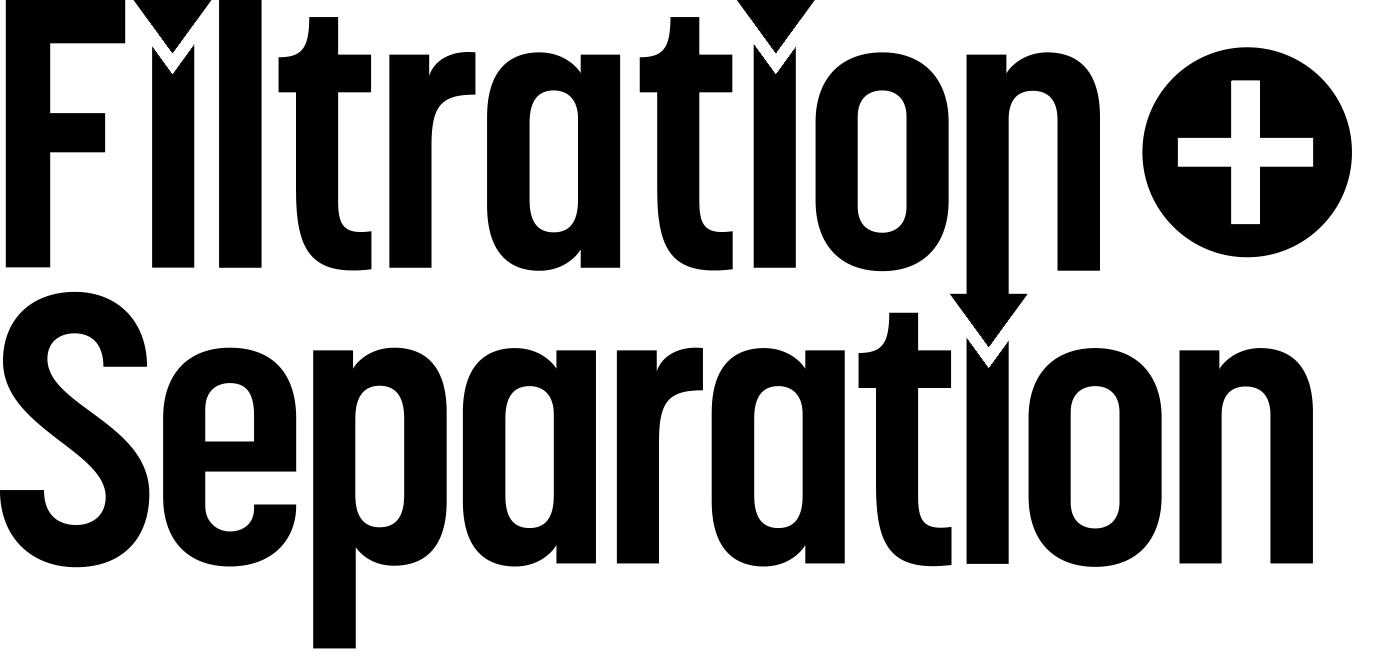This new offering maintains high water permeability of UF membranes while reducing the reverse osmosis (RO) membrane load to stabilize long-term production of high-quality water in wastewater reuse.
With global water demand rising, the use of hybrid UF and RO membranes to recycle wastewater and industrial effluent is growing. Conventional UF membranes are poor at removing biopolymers commonly found in wastewater. As a result, RO membranes have to be cleaned more frequently with chemicals, increasing water production costs and carbon dioxide emissions.
Toray overcame this challenge by quantitatively analyzing the formation process of sub-10-nanometer nanopores in designing a high-removal UF membrane.
Tests have confirmed that the new UF membrane reduces biopolymer transmission, a prime factor in RO membrane contamination, to less than one-third of the levels of current offerings from Toray, providing excellent removal performance, including for sewage and industrial wastewater. Pilot operations at a sewage plant linked UF and RO membranes and demonstrated that the high-removal UF membrane maintained water permeability while reducing the decline in RO membrane permeability by one-third.
This advance should reduce the need for RO membrane cleaning in wastewater reuse applications, including for sewage treatment and industrial wastewater recycling in the chemical, steel, textile, and other sectors. It should also help minimize chemical cleaning, reduce operational problems, and extend RO membrane lifespans, thus cutting water treatment costs and lowering carbon dioxide emissions from replacing and disposing of RO membranes by more than 30%.
Toray is preparing to mass produce this new offering, launching it in mid-2025 in North America, where wastewater reuse is rising, and then rolling it out in Japan and other markets.








